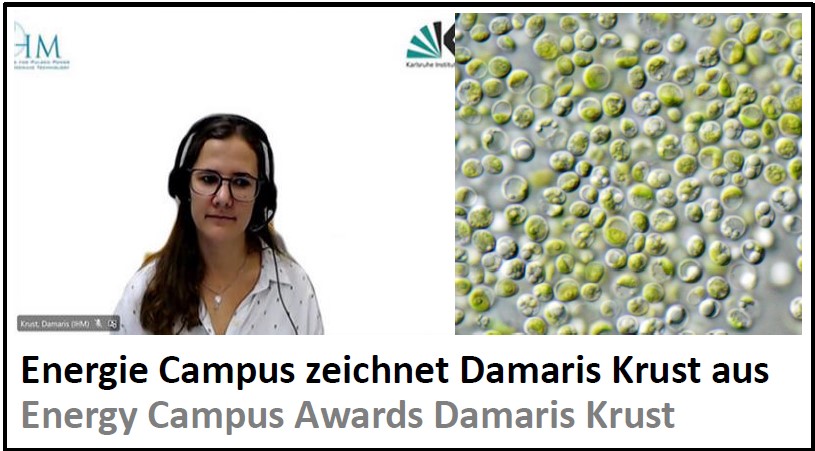2022 08: Death Factor Helps Save Energy
 |
Cell Biology Renders Biotech EfficientThe microalga Chlorella is booming as superfood. Packed with proteins and vitamines it is, besides the „blue alga“ Spirulina (actually a photosynthetic bacterium) a valuable functional food. But how to get the proteins out of the alga? So far by High Pressure Extraction. This does not only require a lot of energy, but the valuable proteins need to be separated from other cell components afterwards. At the Institute for High Impulse and Microwave Technology (IHM) at the Campus Nord a procedure has been developed that works with very strong electrical impulses, which allows to produce the protein in pure form. But again, a lot of energy is needed. During her PhD, which was part of a cooperation between IHM and Botany, Damaris Krust has developed an energy-saving alternative. Interestingly, this started as pure science, but then led to unexpected applications. We had observed that this unicellular organism dies, if treated with the supernatant from electrically challenged sister algae. This releases the protein as efficient, as if the algal cell itself had been electrocuted. Thus, there is a mysterious death factor that is released by the electrical impulse. Damaris Krust has now mapped the conditions, under which this death factor is formed, in great detail and was able to generate biotechnological benefit from this. The energy load can be reduced by a factor of more than 100 and this renderst he electrical extraction of proteins more efficient. The Chlorella Smoothie in the supermarket turns by this not only into a superfood but becomes also super-economic. Of course, we have asked ourselves, why Nature has developed such a death factor. The key is found in the life cycle of this alga – it divides into packages of four daughter cells that are enclosed in the maternal cell wall. This cell wall contains, what is unusual for algae, chitin, and must dissolve in order to release the daughter cells. The death factor is rather a birth factor, therefore – the electrical impulse induces a precocious release of this factor which induces the cells to dissolve their cell walls. sondern eine spannende Publikation (Krust et al. 2022) veröffentlicht und am Ende noch den Energiecampus-Preis der Stiftung Energie und Klimaschutz (mehr...) eingeheimst. Damaris Krust has not only successfully defended her PhD with this story, but also published an exciting publication (Krust et al. 2022) and also got the Energy Campus Award by the Foundation Energy and Climate Protection(more...). Review publication on the project.
|
